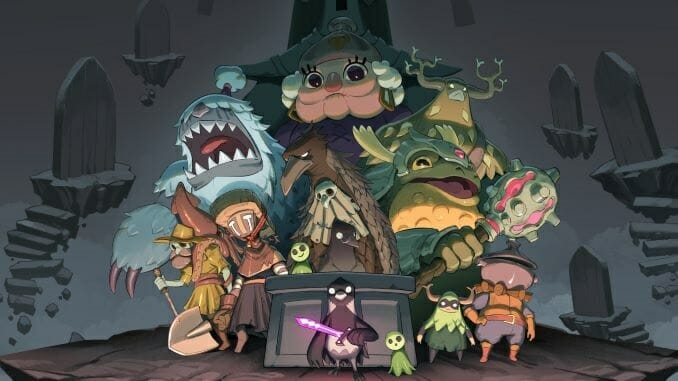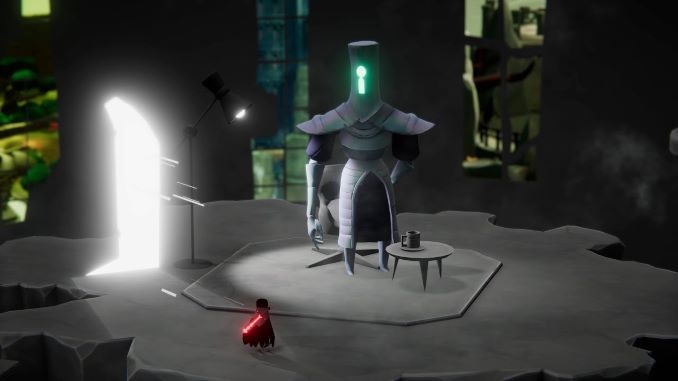
We don’t all get to go gracefully, but Death’s Door advises us to embrace the end as thoroughly as we can. We’re all going to die, and we’re all just going to have to accept that. It’s something everybody eventually has to come to terms with, both on a larger, cosmic level, and then personally, directly, once death squarely has us in its sights. That second step can come over a period of years, as age or disease slowly weakens us, or in the split-second before the unexpected takes us out. Sometimes it doesn’t come at all, and in an instant we go from living our mundane lives to having no life at all. Would you rather know when you’re going to die far enough in advance to get your affairs in order, even if that requires living in pain for an extended period of time, or just have it all come to a sudden, unexpected end? If science somehow “cured” age and disease, would you prolong your life as long as you possibly could, or just let nature run its course? Death’s Door prompts these questions, and more, during a quest that evokes some of the classic adventure games of the ‘80s and ‘90s.
Most videogames are about death on some level. Death’s Door is almost entirely about death—not just the deaths you’re responsible for, but the inevitability of death itself, and why we need to accept it when our time has come. When the latest Lord of Doors, the cosmic entity who oversees a bureaucracy of business-like reaper crows, refuses to accept death, he sends his whole world into disarray. It’s up to one crow to untangle this mystery and resolve the matter the only way it can be: fatally.
If you don’t know what a “reaper crow” is, well, it’s a crow, who’s also a grim reaper. There’s a whole team of ‘em. Some of them really love filing paperwork. You don’t really see your crow do much reaping in the stereotypical sense—popping up bedside as a body winds down, ready to shepherd the soul to whatever comes next. It’s more of a mass murderer crow than a grim reaper; the only souls it claims are from the various creatures it kills throughout the game. You’ll do that with a small arsenal that you collect over time, complete with arrows and bombs; between those weapons, the overhead point-of-view, and the puzzling hideouts of its bosses, Death’s Door owes a great deal to early Zelda games.

One of the most crucial things it picked up from Zelda is the importance of world-building and level design. The world of Death’s Door sprawls out into a handful of different sections, each with its own unique style and sense of place. They’re all connected seamlessly as you journey forth, and there are also a network of doors that let you immediately hop into specific corners of each section. Bosses don’t live in dungeons or temples, per se, but it’s recognizable as how Zelda games are often structured; there’s a central hub that connects everything together, and then you’ll have to trek to the edges of the world to hunt down powerful enemies in their own individual, uniquely detailed areas.
Death’s Door’s world is fleshed out through frequently fantastic writing and a legitimately good sense of humor. That second part is as subjective as it gets, of course, and some of the attempts at humor are a little too twee or cloying, but for the most part this is the rare game that’s actually successful at being funny. It introduces a constantly growing roster of memorable, keenly observed characters whose personalities are firmly established through sharp and economical dialogue, and along the way it’ll even get you to actually care about a few of them. Death’s Door will make you feel ashamed of killing some of your enemies without getting too heavy-handed about it, which is a delicate balancing act most games can’t pull off.
Death’s Door also implicitly argues something the entertainment world at large needs to understand: Nostalgia doesn’t have to be shameless or oppressive. It doesn’t have to be the summation of a game’s (or a movie’s, or a TV show’s) ambition. It doesn’t have to be splashed all over the cover and title screen, or the full extent of the marketing campaign. Death’s Door deeply evokes the spirit of some of the most beloved games of all time, and does it well enough that anybody familiar with those legendary games will no doubt recognize and appreciate it. And it does all this with a context and presentation that makes it feel new and vital and not just like a calculated imitation of the past. It takes so much of what made the original Zelda and A Link to the Past into timeless classics, but makes them into their own. Nostalgia can be part of the package, but it shouldn’t be the whole point, and Death’s Door’s cocktail of mechanical nostalgia and narrative creativity is something we don’t see enough of in today’s IP-crazed business.
Ultimately, unlike the Lord of Doors, Death’s Door knows when its time has come. This is an exceptionally well-paced game that wraps everything up at the ideal moment. It doesn’t skimp on challenging action or a satisfying story, but it also doesn’t expect us to devote dozens of hours to it. You can reach the end of the story in less than eight hours—roughly as long as the original Legend of Zelda. Its end is neither sudden and unexpected, nor long and drawn-out. If only we can all embrace our own end as gracefully as Death’s Door does.
Death’s Door was developed by Acid Nerve, and published by Devolver Digital. Our review is based on the PC version. It is also available for Xbox Series X|S and Xbox One.
Senior editor Garrett Martin writes about videogames, comedy, travel, theme parks, wrestling, and anything else that gets in his way. He’s also on Twitter @grmartin.